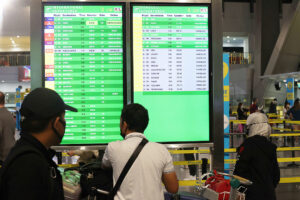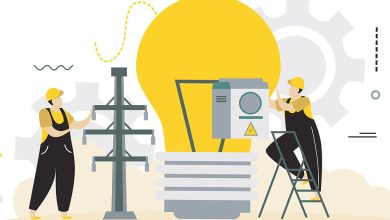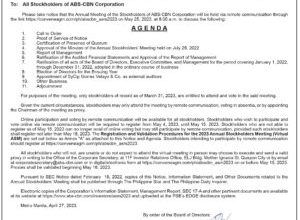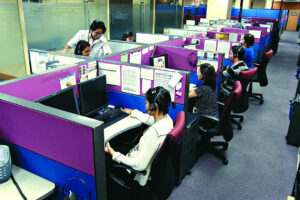Airlines’ NAIA operations likely to normalize within 3 days — MIAA

AIRLINES are expected to normalize their operations at the Ninoy Aquino International Airport (NAIA) within the next three days, an airport official said, a day after a power outage downed its air traffic control system and caused numerous flight cancellations and delays.
“It will take some time, our estimate is about 72 hours before we can really go back to full regular operations, but we are requesting all the passengers to coordinate with the airlines directly, and hopefully they will also be able to accommodate all of them the soonest possible time,” Manila International Airport Authority (MIAA) General Manager Cesar M. Chiong said in an interview with One News Channel’s The Agenda on Monday.
He noted the primary and backup power supply for the communications, navigation, and surveillance/air traffic management (CNS/ATM) system failed on Sunday, causing the outage that affected around 300 flights.
Mr. Chiong said the MIAA is trying to expedite the processing of a backup air traffic system. He noted NAIA is currently handling a maximum of 15 flights per hour as of Monday morning, down from the usual 20.
“The passengers might be accommodated around Jan. 4 to 5. That’s why we’re coordinating not just with the local carriers, but also with the foreign carriers, if they can upgrade the type of aircraft that they will operate here in NAIA so that we can accommodate more passengers,” Mr. Chiong said.
The Civil Aviation Authority of the Philippines (CAAP) in a statement said it is currently investigating the main cause of the power supply problem which affected the CNS/ATM system.
The CAAP’s Aerodrome and Air Navigation Safety Oversight Office (AANSOO), composed of engineers, air traffic controllers, pilots and a lawyer, will be in charge of the investigation.
The P10.8-billion ATM system started operations in July 2019 and was financed by the Japan International Cooperation Agency (JICA).
“CAAP recognizes that the system is already behind when it was first used in 2019 and has made recommendations to the President on improving the country’s air traffic management system,” the agency said.
Transportation Secretary Jaime J. Bautista said that the government is not ruling out the possibility of an external attack as one of the causes behind the technical issue.
“We are not ruling it (external attack) out. It is good that we consider all possible causes of the problem. We will conduct an investigation. There were speculations that it may be the effect of some Chinese operations, which we do not think is really the cause. But we will do a full investigation of the incident,” Mr. Bautista said in an interview on ABS-CBN News Channel.
“I think that it (issue) may happen again. But we’ll see to it that it will not be as devastating as what happened on Jan. 1. We’ll see to it that we take care of the system,” he added.
Mr. Bautista said it may take some time to address the issues surrounding the ATM system since it would require additional funding.
“More redundancies will take some time because we will need full funding for this. We will need a feasibility study which we will present to the National Economic and Development Authority (NEDA) for approval and then look for financing,” he said.
The country’s CNS/ATM system is around 10 years behind compared with those used by neighboring countries such as Singapore, he added.
Meanwhile, Manila Electric Co. (Meralco) said that there were no issues affecting its distribution facilities nor any power outage or fluctuation to its power lines and facilities that could have affected the ATM system.
“We are closely coordinating with NAIA management regarding the situation. Meralco is currently onsite and ready to provide assistance if needed by airport authorities,” the power distributor said.
Meanwhile, Go Negosyo Founder Jose Ma. “Joey” A. Concepcion III suggested the revival of a consortium’s proposal to modernize the NAIA.
“Having seen how badly key systems in our air transportation system need to be modernized, and how severely any glitch can affect the whole country, I hope that this time, we can revive this proposal and see it through,” he said in a statement.
In 2018, the so-called NAIA consortium proposed to rehabilitate and expand NAIA over a 15-year period. It was composed of Aboitiz InfraCapital, Inc.; AC Infrastructure Holdings Corp.; Alliance Global Group, Inc.; Asia’s Emerging Dragon Corp.; Filinvest Development Corp.; JG Summit Holdings, Inc. and Metro Pacific Investments Corp. The group’s technical partner was Singapore’s Changi Airports International Private Ltd.
However, the proposal failed to take off as the consortium and the Duterte administration did not agree on the terms.
Rene S. Santiago, transport expert and former president of the Transportation Science Society of the Philippines, said in a Viber message that claims that the system is outdated “is a convenient scapegoat for failed maintenance.”
“It is not the first time this happened, although previous incidents were too short to be as disruptive as on Jan. 1. Professionalization of CAAP, and other transport agencies have been neglected. That is the root cause of problems in air, water, road, and rail transport,” he added.
Meanwhile, Philippine Airlines (PAL) Spokesperson Cielo C. Villaluna told reporters via Viber message that the CNS/ATM issue on Jan. 1 affected 244 flights and 24,000 passengers.
In a separate advisory as of 7 a.m. on Monday, the Transportation department said that Cebu Pacific has canceled 29 international and domestic flights on Monday.
AirAsia company spokesperson Carlo Carongoy said in an interview on One News that 44 of its flights were canceled on Jan. 1, affecting 5,000 passengers.
“I see that flights for (Tuesday) and the succeeding days will be back to normal already. We’re just trying to squeeze in, if we will be allowed by the CAAP, some additional flights to address those passengers whose flights were affected on Jan. 1,” Mr. Carongoy said. — Revin Mikhael D. Ochave




